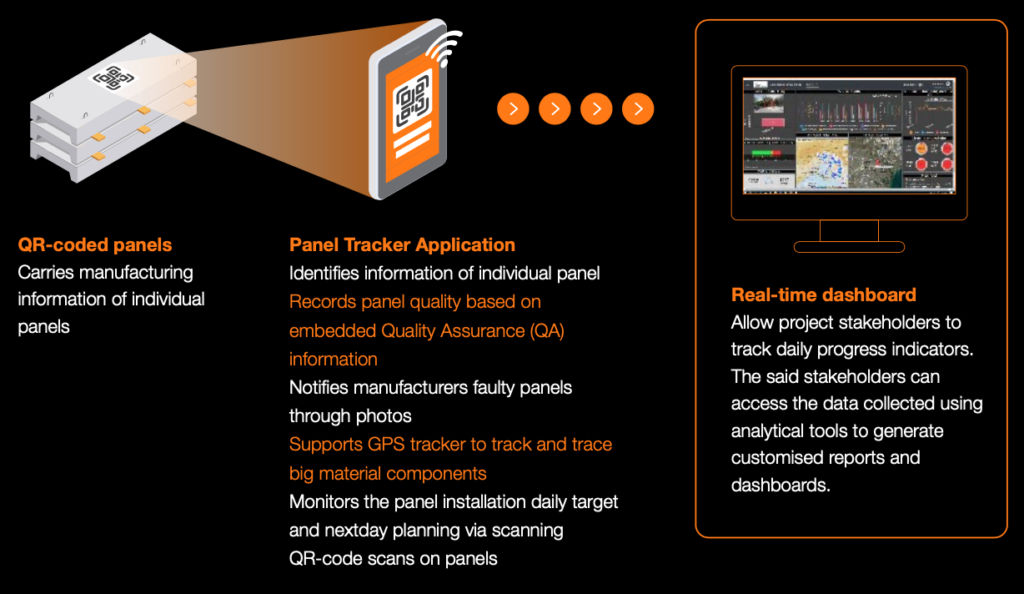What is material tracking and why is it important?
A typical construction site uses over 2,500 uniquely numbered panels, on top of other materials that are procured from large-scale manufacturers and transported on-site. These materials go through a long supply chain before being stored on-site and used in infrastructure building. In complex projects, construction materials such as panels have specially designated locations on the bridge and are carefully stored in order to maintain a clear and systematic on-site inventory system.
No matter the size of these projects, construction projects often have structures and processes in place to keep tabs on materials and prevent unnecessary material mishandling during site activities. This is because materials tracking for materials management forms the fundamental elements of a productive project and contributes to a large chunk of the total project cost.
Therefore in this article, we will discuss how IoT solutions can enhance project productivity and improve logistic planning by improving material tracking in project sites.
The challenge: handling and storage of construction components
Generic materials such as panels are some of the most fundamental pieces to construction projects. Typically, the visibility into the origin of these components is rather opaque as they experience various handling processes by multiple parties in the supply chain. This increases the risk of defects and the need for stringent quality assurance. Such procedures take up valuable resources and slow down projects even further when materials stored on-site is found to be faulty.
Inefficient material management also leads to project delays and bottlenecks as critical components become unavailable or when damaged goods are transported on-site without being noticed. This creates a productivity-draining cycle related to crews having to procure and wait for emergency materials, sometimes even causing reworks further delaying the next steps of the project. One key factor is that project stakeholders are required to maintain repetitive and numerous quality control documentation for each individual panel throughout the project’s course. The manual nature of these processes is known not only to take up much of the project superior’s time but is prone to human mistakes as well.
Further exacerbating the issue at hand is the limited space at the live sites that complicates on-site equipment storage, such as road over rail. Stockpiling large-volume components such as prefabricated reinforced concrete panels may seem to help like a viable solution. However, overloading small spaces with too much material poses safety risks to the team and may even slow down operations due to restrictions in physical movements. Key project materials can sometimes get lost in crowded, complicated, and over-stored on-site inventory locations. While this causes minimal friction to the labor and material flow situation, the spaces used to store materials can potentially block workflows and cause disruptions to on-site schedules that pull down overall project productivity.
Therefore, efficient material tracking remains vital to not only provide project-wide visibility of all construction materials but ensure high levels of productivity and optimise overall project costs. More effective ways to exploit productivity gains from material tracking require solutions that have a non-interruptive presence and can be seamlessly integrated into real-time project management.
How can we leverage IoT to overcome the challenges?
3 key advantages for your project
- A streamlined process for panel replacement to minimise project delay risks.
- Optimising material logistics by coordinating deliveries based on next-day planning.
- Automated quality control documentation helps project stakeholders manage administrative work more effectively.




